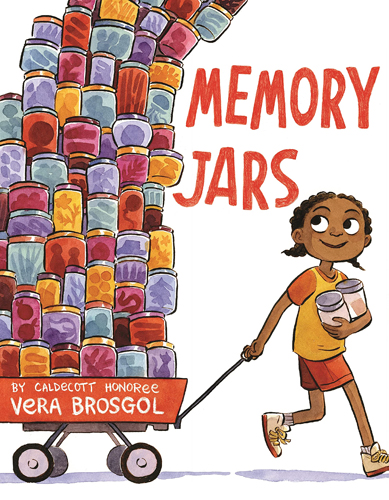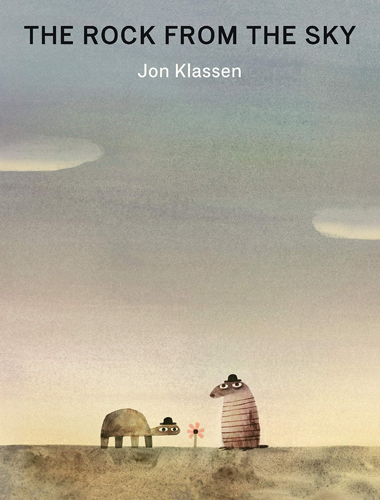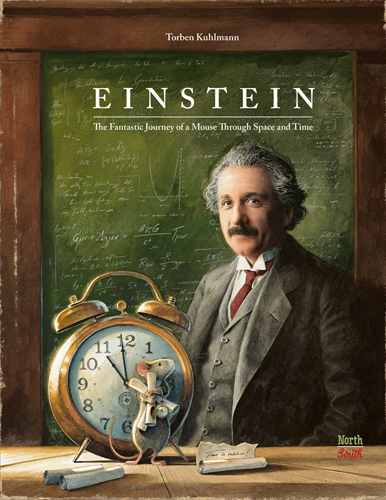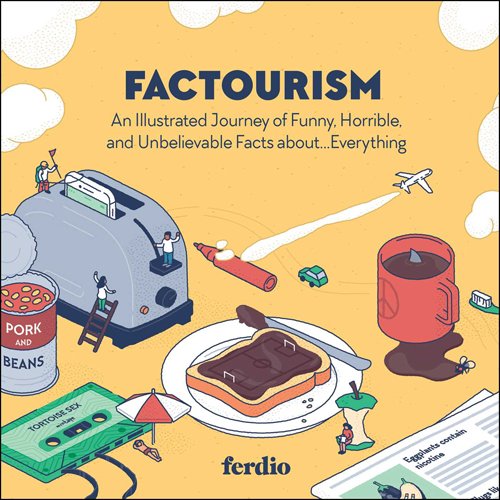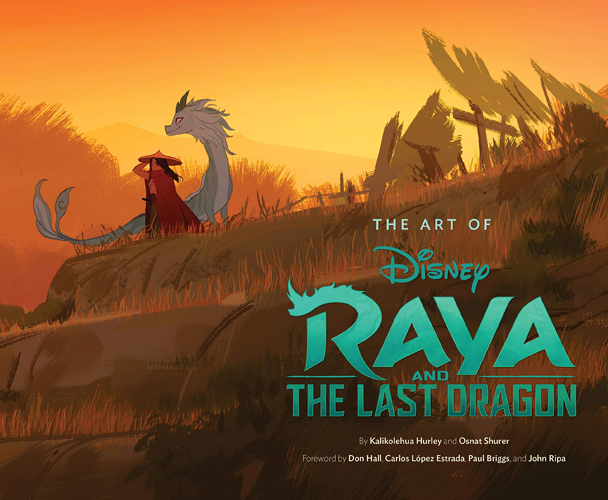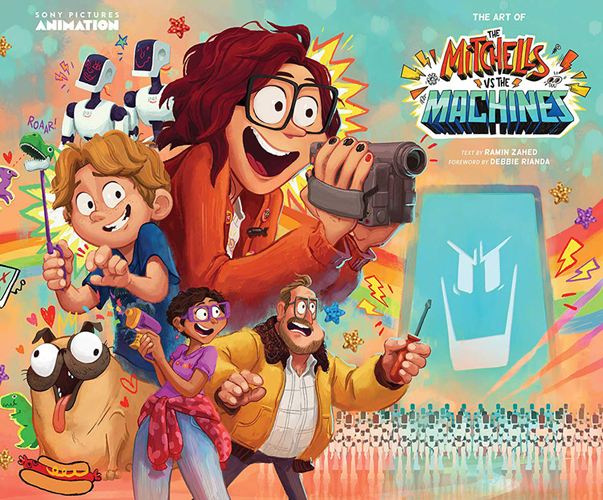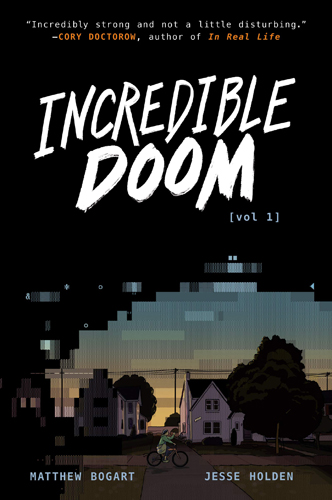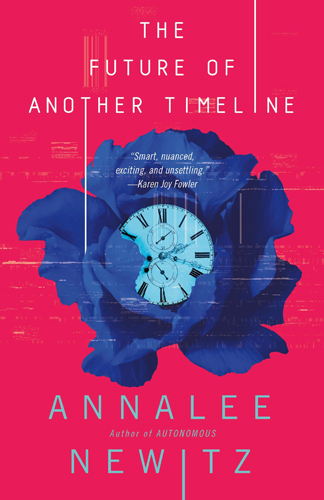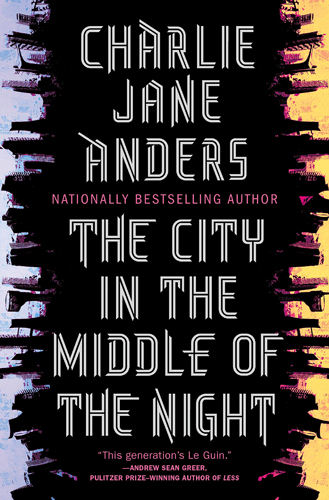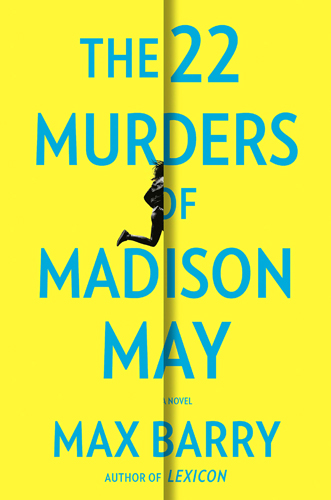Well, it’s been about a month since my last Stack Overflow column, and a lot has been happening—kids finishing up the school year (including high school graduation!), and getting to host some small game nights now that people in my gaming group are fully vaccinated. But also, I’m just finding that it’s taking me longer to read books lately, and so I don’t have a big stack to cover every week. I’ve got a number of “art of” books that I’d love to share in a single column, but we just haven’t gotten through all the movies yet (and I hate spoilers), so I think I’ll just parcel those out as we go.
So, this week is a bit of a grab bag: books I’ve read in the past month or so! We’ll see if I can get a bit more organized this summer (but don’t hold your breath!).
Dr. Fauci: How a Boy From Brooklyn Became America’s Doctor written by Kate Messner, illustrated by Alexandra Bye
Because of COVID-19, everyone in America is familiar with Dr. Anthony Fauci, who has been the public face of the White House’s directives and recommendations throughout the pandemic. This picture book tells his story, starting from his childhood curiosity about the world and his decision to become a doctor. He became an expert in studying diseases, from the AIDS epidemic of the 1980s to the Ebola outbreak in 2014 and, of course, the novel coronavirus that we’re still dealing with now. The back of the book has several additional pages about how vaccines work and how they’re developed—it’s no surprise that the book is pro-vaccine—and also has some more about Dr. Fauci, including photographs and his “Five Tips for Future Scientists” and a timeline of his life. There’s also a hefty list of recommended reading and list of sources. One piece of advice that is repeated throughout the book: “Think about it carefully and try to work it out.”
How to Apologize written by David LaRochelle, illustrated by Mike Wohnoutka
Apologizing is hard. It’s hard to say you’re sorry to somebody who’s mad at you, or somebody who owes you an apology too. It’s hard not to minimize what you did wrong, or make excuses. As we all know from the various public apologies we see in the news, it can be very hard to make a sincere apology, too. This picture book teaches kids (and adults!) how and why to make a good apology (as well as what makes a bad apology), demonstrated by cute animals. It came in handy when my youngest ruined her sister’s notebook and we had a discussion about why it was important to apologize and how to make amends.
Memory Jars by Vera Brosgol
Freda loves picking blueberries, but she can’t eat them all (I mean, not a problem we’ve encountered) and she doesn’t want to wait a whole year to taste them again. So when her grandma show her they can turn them into jam and enjoy their sweetness even in winter, Freda gets an idea: she collects a bunch of jars and starts saving everything she loves: freshly baked chocolate chip cookies, Mrs. Alexander’s singing, even her best friend who was going to move away. Vera Brosgol’s wonderful illustrations show the world losing its color as Freda tries to preserve all the things that bring the world to life.
It’s a cute book about magically preserving things in jars, but it also has a profound message about holding on too tightly to the way things are. Things change, seasons change, relationships change—even the things that we love. And while there are ways to preserve some things to enjoy later, we can’t trap everything under glass, either.
The Rock From the Sky by Jon Klassen
Jon Klassen is a favorite here in my family—his “hat” series is so much fun to read, and the deadpan expression of these various creatures (animals, polygons, people) just makes for a funny contrast to the ridiculous things going on around them. The Rock From the Sky is a longer picture book than most of the others, and it features a turtle, an armadillo(?), and a snake, all wearing little hats, discussing things like their favorite places to hang out. Oh, right, and there’s also a huge rock falling from the sky.
This is one of those books that makes you wonder if it’s an allegory, but if so, it’s not entirely clear what it means. The turtle is just working so hard to impress the others, talking about how much better its spot is than the others, but things don’t always work out well. And there’s also a point in the book where it gets really strange, but I don’t want to spoil it. Suffice to say, if you like the absurdity of Jon Klassen’s hat books, you’ll appreciate this one, too.
The Bruce Swap by Ryan T. Higgins
In case you’re new to this series of picture books, Bruce is a grumpy bear who generally prefers to have his own quiet space, but he winds up being “mother” to a gaggle of Canada geese, as well as host to a trio of mice who moved in and generally treat his house as their own. His fun-loving cousin Kevin is coming for a visit, but due to a mix-up Bruce leaves for a fishing trip just as Kevin arrives—and nobody else knew about the swap. All they know is that Bruce is suddenly cheerful, adventurous, and much more fun. Well, maybe a bit too fun.
One of the frustrating things about many picture books (even including Mother Bruce) is the way that they so often seem to imply that it’s the introverts and the tidy people who need to learn a lesson: an unexpected guest shows up who is noisy, boisterous, and messy, and the moral of the story is that we’ll miss them when they leave, that everyone should learn to be spontaneous and not worry so much about being organized or having alone time. Well, one thing I appreciated about this book in particular is that it shows that sometimes there can be too much noise, too much mess, too many people at a party. Sometimes it’s okay to want some peace and quiet.
Einstein: The Fantastic Journey of a Mouse Through Space and Time by Torben Kuhlmann
A mouse, excited to attend a huge cheese fair in Bern, discovers to his disappointment that he arrived a day too late. A joking comment from another mouse gets him wondering about how to turn back time, as well as thinking about the nature of time itself. He ends up in a patent office, where he reads about Einstein and his theories … and builds a time machine! But things—of course, since we’re dealing with time travel—do not necessarily go as planned, and the mouse ends up encountering Einstein himself.
Kuhlmann’s books about mice and historical figures—we’ve met Lindbergh, Armstrong, and Edison before—are beautifully illustrated and incredibly detailed. They’re heftier than most picture books, with more pages, more text, and so many pictures. I was particularly excited about this one, of course, because it involves time travel, but they’re all a lot of fun to read. This one also includes a section in the back explaining some of the concepts of relativity, with some thought experiments to help even young readers get a sense of how weird time actually can be.
Factourism by Ferdio
If you and your kids love weird trivia, you’ll enjoy Factourism, a small collection of strange and unusual facts about everything from food to animals to video games to LEGO. Each page has a brief fact, accompanied by an illustration, and then some more details in smaller text along with the source. I learned, for instance, that only 5 modern countries in the world were never colonized by Europe (ugh, really?), and that kids perform better at boring tasks when dressed as Batman (time to hit the costume store!). Ferdio is an information design agency, so they’re experts at making memorable visuals from data—that makes this book a lot of fun to peruse.
The Art of Raya and the Last Dragon by Kalikolehua Hurley and Osnat Shurer
My family finally got around to watching Raya and the Last Dragon so I could finally take a peek at this book! It’s a fantasy story inspired by Southeast Asian cultures, with five nations living in tension after their land was ravaged by monsters. The dragons that once protected the land were all turned to stone, leaving behind a dragon gem, a source of powerful magic (and also great envy from the other lands). When Raya learns that one dragon may have survived, she goes out searching for it, hoping for a way to heal the divide.
This book is filled with character development art for many of the main characters, but I also really liked the exploration of the five lands, each of which is named after a part of a dragon and has its own motif, color themes, flag, and decorative patterns. The book also includes a color script and briefly discusses the cinematography, like how different types of camera and lighting styles were used to portray trust and distrust, one of the major themes of the film.
Although this book doesn’t lay out the whole storyline, it does include images or mentions of some key moments, so it’s still best to read after you’ve already seen the movie. One odd thing is that there are some instances where a character’s design clearly changed from the illustration to the final movie—for instance, Raya is seen with a sort of arm cannon, and Namaari has a clawed metal arm in a few drawings—but there’s no mention of that in the text, no explanation of what that idea was about or why it was changed. There was also one instance in which the text described one drawing as the one that really captured the relationship between Raya and Sisu, the dragon … but then that particular drawing isn’t included in the book! I personally also wanted a little more about Tuk Tuk, Raya’s giant pangolin pillbug companion: how does that saddle work while he’s rolling around?
For the most part, though, it’s a really great book to page through, with a lot to look at. If you enjoyed the film, you’ll appreciate this peek behind the curtains.
The Art of The Mitchells vs. The Machines by Ramin Zahed
Okay, if you haven’t seen The Mitchells vs. The Machines (streaming on Netflix), you really should do that. I’ll wait. You can read our 10 Things Parents Should Know about it, but here’s the gist: Katie is getting ready to go off to film school—road trip with her awkward family!—when the robot apocalypse happens, and her family not only has to figure out how to communicate with each other but also stop the overpowered AI from blasting all the humans into space. It’s a hilarious (and also emotional) movie with a really cool look to it, as we get bits of Katie’s hand-drawn 2D animation layered over the 3D-animated world.
The book tells the story of where the movie came from—it was inspired largely by Mike Rianda (co-writer and co-director), including his relationship with his family, and his outdoorsy dad’s take on technology. It has character design sketches; Katie in particular went through a lot of versions before they finally nailed down her look, and the book includes even tiny details like all those things she has written on her hands, or the design of the mom’s sweatshirt that’s just tied around her waist for most of the film. You get a closer look at some of the environments, too, like the Mitchell home or the Dino Stop (which actually had a whole Dino Walk that didn’t end up getting put into the film).
There’s also details about the machine world, the robots and the PAL Labs headquarters, and the way that they’re animated using a different color palette, rendered in a way that has more flat colors and hard edges than the human world. It’s cool to see this explanation of what went into the visuals, because watching the movie you might not immediately get why a scene gives you a particular vibe, or what specifically it is that makes the machine world look so cold and threatening. There are some things in the book that didn’t make it into the movie—for example, a giant robot made up of various machines glommed onto each other—but the text doesn’t really explain why that idea was scrapped.
But, seriously, The Mitchells vs. The Machines is an excellent movie, and this book is a great way to spend some more time getting to know this wacky family and the amazing world the filmmakers created for them.
Incredible Doom (Volume 1) by Matthew Bogart and Jesse Holden
Ah, the 1990s, when going online meant making sure nobody else was using the phone at the time, and the internet was an obscure place that was hard for most people to navigate, if they’d even heard of it. Incredible Doom is a graphic novel set in 1994, following the story of a couple different kids as they discover the internet for the first time.
Allison feels trapped by her father, a stage magician who is controlling and manipulative. He buys a computer but is quickly frustrated by it—but Allison learns to use it and connects with Samir, who is still processing his parents’ divorce. Richard moves to a new town, but is bullied by a kid who has a history with him; he gets instructions to dial into the Evol BBS, and befriends Tina, who runs the BBS from a ramshackle house filled with punk musicians. The book includes things like ASCII art, the Pine email client, and the Geek Code—it feels authentic and helps establish this time period when even PCs weren’t very common in many households yet. It’s a heady time, and the internet literally changes the lives of Allison and Richard, giving them both a sort of freedom they haven’t had. I’m really curious to see where the story goes after this whopper of an introduction.
The Future of Another Timeline by Annalee Newitz
I mostly think of Annalee Newitz as the founder/editor of io9 (where they included me on the “Sexiest Geek Dads in the Galaxy” back in 2012) though I guess they haven’t been there since 2015, so you can see how up-to-date I am there. I’d read their non-fiction book Scatter, Adapt, and Remember but this is the first of their fiction that I’ve read—and of course I was drawn to it because it involves time travel. In this world, history is kind of like a Wikipedia page: people are constantly making “edits” by changing things in the past, which then propagates into the present and future. The time machines are actually ancient structures, five of them spread across the globe, activated by thumping a series of rhythms into the ground (now that the actual instructions on finer control of the interface has been lost).
Tess is part of a group of time travelers called the Daughters of Harriet (as in Tubman), which poses as scholars studying various aspects of history, but their real goal is to visit key moments in history and fight for change—for instance, to secure women’s rights in the present and future. They come up against Anthony Comstock and his followers, discovering that there is a plan to sabotage the Machines, locking history once they’ve managed to make certain edits. The novel incorporates real events and people (like Comstock, or the 1893 World’s Fair), but with the added twist of these time machines that have always been a part of recorded history.
The other plotline takes place in the 1990s; Beth is a high-schooler who loves punk music, but she lives in fear of her father, who has countless rules about everything but changes his mind abruptly without warning. Her best friend, Lizzy, decides it’s her mission to exact punishment on predators and abusers. But Lizzy and Beth are somehow tied to Tess, who is trying to rewrite her own past in addition to protecting history from the Comstockers.
It’s a fascinating book, both in the details about the World’s Fair (which reminded me a bit of reading The Devil in the White City) but also the way that the reader gradually learns how the Machines work, though much about them remains a mystery.
The City in the Middle of the Night by Charlie Jane Anders
And while we’re talking about former editors of io9, I’ve been reading this novel for a while now—it’s densely packed and so I’ve been nibbling at it, reading a little bit at a time. Now that I’m nearing the end, I’m also not sure that I’m ready to be done with it. The story takes place on a tidally-locked planet named January, colonized by humans who fled Earth. One side of the planet is always day, and the other is always night, so there is a narrow strip of twilight where the people can survive between the blinding heat and the cold darkness. Two cities, separated by a treacherous journey, have completely different personalities. In Xiosphant, everything runs on a strict timetable; shutters open and close to simulate night and day, and everyone is forced to comply by the authoritarian rulers. Argelo, on the other hand, is the city that never sleeps, making the most of the perpetual twilight; there’s not a formal government but is unofficially controlled by several families.
The story is told from the point of view of two different characters. Sophie is a university student in Xiosphant, though from a less respected neighborhood, and she is drawn to her roommate Bianca, who comes from the ruling class and is glamorous and popular. When Bianca and Sophie join a group of young revolutionaries hoping to change the way their society is run, it’s Sophie who takes the fall during a raid and is thrown out of the city to die. Meanwhile, the other story is about Mouth, part of a gang of smugglers that travels between the two cities. Mouth was a member of the Citizens, a community that lived on the road, but she’s the only one left, and smuggling is the closest thing she can find that keeps her from being trapped in one place. She’s still dealing with a lot of trauma around the death of the other Citizens and is searching for answers. Sophie and Mouth eventually collide with each other as well, and their stories quickly overlap more and more.
The book touches on so many things: class and privilege, our relationship to technology, climate change, communication, love and acceptance. The two cities represent extremes: one, a rigidly structured society where everyone must know their place and stay in it and people struggle to find respite from Timefulness; the other, a chaotic mess that’s nearly impossible to navigate, where there are rules but none of them are written down. That doesn’t even get into the mysterious dangers of the planet: the strange creatures called “bison” and “crocodiles” that are definitely not what we’d recognize, the Sea of Murder where boats have to thread the needle between treacherous ice and boiling steam. It can be hard to read at times: both Sophie and Mouth are put through the wringer and things get really ugly. Still, I’ve enjoyed exploring January for a while now, traveling with Sophie and Mouth and learning how things work, and watching to see where they’ll go next.
The 22 Murders of Madison May by Max Barry
I’ll close out today’s column with this one, which is due out next month. I’ve really enjoyed Max Barry’s novels in the past, from the corporate dystopia of Jennifer Government to the words-as-weapons Lexicon to the cyborg fable Machine Man. The title made me wonder if it involved time travel—always a bonus for me.
As it turns out, it’s not exactly time travel. It’s a bit more like The Walls of the Universe, where some people are traveling between parallel worlds that are similar but not quite the same. In this case, there’s a serial killer who is apparently tracking down versions of Madison May in various universes and murdering them. Felicity Staples is a reporter who gets assigned to look into one such case, and then accidentally finds herself tangled up with these world-hoppers, unable to get back to her own home with her boyfriend and her cats. Instead, she’s chasing down Clayton Hors as he jumps again and again, hoping to catch him before he kills yet another Madison May.
While I did find the world-hopping pretty fascinating, I’m not sure if I would exactly say that I enjoyed reading this book. I generally don’t read a lot of books that would be considered thrillers, and in particular I found I wasn’t keen on following the exploits of a serial killer. Clayton seems patterned after the so-called incels: his motivation for murdering Madison each time is that he thinks he deserves to be with her, but then he’s not satisfied with who she turns out to be, so then he jumps to another world and tracks down another version of her instead. It’s a disturbing portrait and (intentionally, I suppose) uncomfortable to read. So, while the story is mostly about the cat-and-mouse chase between Felicity and Clayton, the title character of the book almost feels like a prop—you barely get to know each version of her before she’s dead, again.
What I did like, though was the premise of multiple worlds, especially the group that Felicity gets mixed up with and the way that they’re using the travel, as well as Felicity’s perspective on them. Her own journey, trying to catch Clayton but also find a version of the world close enough to stay in, was more interesting, too. Ultimately your enjoyment of this one may depend on your ability to stomach the serial murders, and whether the multiverse story is enough to keep you reading.
My Current Stack
Well, that’s my list for the time being. I’ve gotten a big stack of comics recently that I’m hoping to get through: some new titles in the Science Comics and Maker Comics lines, as well as a few sequels to comics I’ve read before, so I’m excited for those. The piles in my office are growing way too quickly, so I need to buckle down and read more or, I suppose, eventually admit to myself that I can’t read everything and let go of some of them.
Disclosure: I received review copies of these books. Affiliate links to bookshop.org helps support independent bookstores and my writing!



